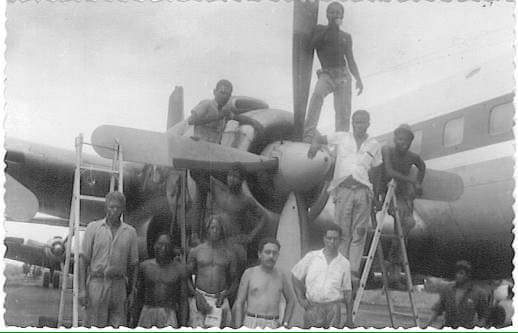Death By Hunger: We Will Never Forget Biafra
By Artur Alves Pereira
It was officially called Joint Church Aid (JCA), initiated by Fr. Tony Byrne CSSp, but the daredevil pilots called it the “Jesus Christ Airline” with a swagger of pride and hint of awe. For almost two amazing years (1967-1970), JCA kept a small, breakaway West African state alive, refusing to allow starvation to be used as a weapon of war. It flew 5,314 extremely dangerous missions, carrying 60,000 tons of humanitarian aid and saved millions of lives. The starting point for their flights was the former Portuguese colony Sao Tomé, less than an hour from the destination.
The lumbering DC-6s and temperamental Super Constellations flew at night from the island of Sao Tome off the coast of West Africa into a tiny airstrip carved from the dense bush, with a weak NDB and Generator, skimming blind over the trees at 2,000 feet to avoid the guns and fighters of the enemy. The flights were undertaken under cover of darkness and without lights to avoid attacking Nigerian aircraft who maintained air superiority during the day, supported by Soviet fishing trawlers offshore, monitoring the flights. Each aircraft made as many as four round-trips each night into Uli. The aircraft - nearly all of which were civilian and operated by civilian pilots - were based, fueled, repaired, and maintained at the supply end of the airlift, not in Biafra.
Three were destroyed on the ground at Uli by Nigerian aircraft. Attacking aircraft were frequently nearby trying to catch the airlifters while landing or on the ground, forcing pilots to hover in darkness until an all-clear was sounded and runway lights could be activated barely long enough to enable a speedy landing. Separation between aircraft in the air was maintained by cockpit radio communication between pilots as there was no radar. Hostile aircraft were flown by mercenaries who taunted airlift pilots over the radio and used call signs such as "Genocide". Approaches were made low over the treetops and landing was made without runway lights some times. At times the brief illumination of the runway lights could provide sufficient bearing for the attacking aircraft.
Once on the ground Air and ground crew frequently had to evacuate the aircraft after landing and take cover from attacking aircraft in trenches alongside the runway. Radio broadcasts from Uli normally used code, such as “no landing lights” for “Air Raid". At its peak, Uli “airport” – really just a widened road – was the busiest in all of Africa, handling up to 50 flights a night, and each flight broke some international law. Each of the old planes had its own JCA logo – two fishes, one of the earliest symbols of Christianity.
JCA lost 25 pilots and crew to the guns and bombs of the Nigerian forces intent on enforcing the Biafran blockade. The Nigerian military government of the day refused steadfastly to allow relief flights or any other form of humanitarian aid into Biafra. Thirteen of the amateur pilots — some of them priests — lost their lifes during a mission that was officially illegal, but had the blessings of the Pope.
Despite JCA’s best efforts, it is estimated some 1 or more million Biafrans starved to death.
After the war it was decided that due to political sensitivity, members of JCA would wait 25-30 years before telling their unique story. Fr. Byrne wrote a book in 1997 chronicling this amazing humanitarian project titled Airlift to Biafra, which is available on-line through major book sellers. Worth to read especially for us who love Biafra





The then Supreme Military Commander of defunct Biafra